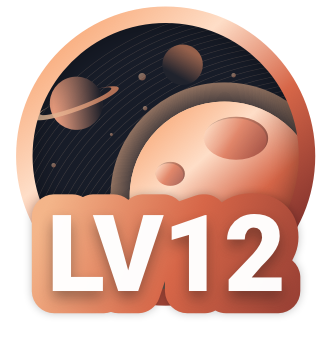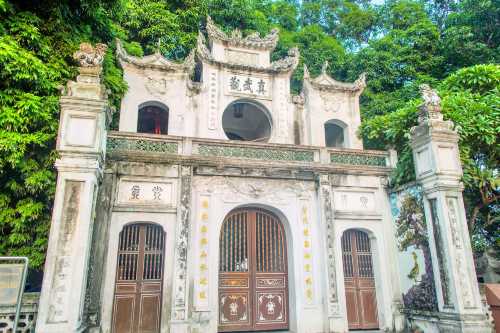Quan Thanh Temple: A Historical and Cultural Gem of Hanoi Overview Quan Thanh Temple (Đền Quán Thánh), also known as Tran Vu Temple, is one of Hanoi's oldest and most sacred Taoist temples. Established in the 11th century during the Ly Dynasty, it is part of the "Four Sacred Temples of Thang Long Citadel," guarding the northern entrance of the ancient capital. The temple is dedicated to Huyen Thien Tran Vu (Xuan Wu), the Taoist deity of the north, symbolized by a serpent and turtle. Located near West Lake at the intersection of Quan Thanh and Thanh Nien Streets, it remains a key spiritual and tourist site in Hanoi. Historical Significance - Founding: Built in 1010 under Emperor Ly Thai To to celebrate the relocation of Vietnam’s capital to Thang Long (modern Hanoi). - Sacred Role: One of four temples (alongside Bach Ma, Kim Lien, and Voi Phuc) positioned to protect the city from malevolent spirits and invaders. - Renovations: Restored multiple times, most notably in 1677 (when the iconic bronze statue was added) and 1893, blending Ly, Le, and Nguyen Dynasty architectural styles. Architecctural Highlights 1. Bronze Statue of Tran Vu: - Cast in 1677 by artisans from Ngũ Xã village, this 3.96-meter-tall, 3.6-ton black bronze statue depicts Tran Vu seated on a turtle, wielding a sword entwined by a serpent. It is Vietnam’s second-largest bronze statue and a masterpiece of 17th-century craftsmanship. - The deity’s symbols—the turtle (protection) and serpent (wealth)—reflect Taoist and Vietnamese folklore traditions. 2. Structural Features: - Three-Gate Entrance: Adorned with phoenixes and unicorns, typical of Nguyen Dynasty design. - Courtyard: Shaded by a centuries-old banyan tree, with a brick oven for burning joss paper during festivals. - Ancient Artifacts: Includes a 1.15-meter bronze bell, wood carvings of mythical creatures, and over 60 parallel poems in Chinese characters. Cultural and Spiritual Practices - Festivals: Locals visit during Tet (Lunar New Year) and on the 1st/15th lunar month days to pray for health, luck, and prosperity. - Syncretism: Though Taoist, the temple integrates Buddhist and Confucian elements, reflecting Vietnam’s religious blending. - Martial Arts: Hosts Vovinam classes, honoring Tran Vu’s association with martial prowess. Visitor Information - Location: 190 Quan Thanh Street, Ba Dinh District. - Hours: - Daily: 8:00 AM – 5:00 PM. - Extended hours on Tet Eve and lunar month days (6:00 AM – 8:00 PM). - Entry Fee: 10,000 VND (adults); 5,000 VND (students/children). - Dress Code: Modest attire covering shoulders and knees. Best Time to Visit: Early morning for tranquility, or during Tet (January–February) for vibrant rituals. Nearby Attractions 1. Tran Quoc Pagoda: Vietnam’s oldest pagoda, located on West Lake. 2. Ho Chi Minh Mausoleum: 1 km away, housing the embalmed leader. 3. Temple of Literature: Vietnam’s first university, dedicated to Confucius. Conclusion Quan Thanh Temple is a testament to Hanoi’s rich spiritual heritage and architectural ingenuity. Its iconic bronze statue, serene ambiance, and historical depth make it a must-visit for those exploring Vietnam’s cultural legacy. Whether admiring its artistry or participating in age-old rituals, the temple offers a profound glimpse into the soul of Hanoi. #travel #vietnam #hanoi #temple
Ice Lim 33
Popular Destinations
Kep Travel | Riyadh Travel | Australia Travel | San Francisco Travel | North Goa Travel | Proserpine Travel | Guangzhou Travel | Cairns Travel | Vancouver Travel | Wellington Travel | Gold Coast Travel | Zhengzhou Travel | Chongqing Travel | Dehradun Travel | Honolulu Travel | Jiashan Travel | Kazanlak Travel | Sanda Travel | Mornington Travel | Meizhou Travel | Maidstone Travel | Grasse Travel | Victor Travel | Morondava Travel | Sarasota Travel | Alagoas Travel | Naantali Travel | Lewisboro Travel | Lubbock County Travel | Eisenstadt Travel
Recommended Attractions at Popular Destinations
Bangkok attraction near me | Manila attraction near me | Tokyo attraction near me | Taipei attraction near me | Hong Kong attraction near me | Seoul attraction near me | Kuala Lumpur attraction near me | Los Angeles attraction near me | Shanghai attraction near me | New York attraction near me | Shenzhen attraction near me | Osaka attraction near me | Singapore attraction near me | London attraction near me | Guangzhou attraction near me | San Francisco attraction near me | Beijing attraction near me | Macau attraction near me | Bali attraction near me | Jakarta attraction near me | Paris attraction near me | Ho Chi Minh City attraction near me | Istanbul attraction near me | Phuket attraction near me | Chicago attraction near me | Seattle attraction near me | Toronto attraction near me | Orlando attraction near me | Cebu attraction near me | Chiang Mai attraction near me
Popular Attractions
Petronas Twin Towers | Atlas Beach Club | The Bund | Universal Studios Japan | Melbourne Skydeck | Gold Coast Sea World | Melbourne Zoo | Ocean Park Hong Kong | Universal Beijing Resort | Devdan Show | Yulong Snow Mountain | Milan Park | Darling Harbour | Currumbin Wildlife Sanctuary | Universal Orlando Resort | Lotte World Adventure | Solaniwa Onsen Osaka Bay Tower | Yantai Mountain Scenic Spot | Ekta Udyan | Riverside Park | Saziani Aussichtsplattform | Xarqui Park | Dake Onsen Dake no Yu | Miyazaki Prefectural Art Museum | Gumnut Reserve | Stellmoor-Ahrensburger Tunneltal | Crane Meadows National Wildlife Refuge | Wakeboard Cable Pag | Rod Laver Arena | Pinang Peranakan Mansion
Popular Restaurants in Hanoi
Bun Cha Dac Kim | Cha Ca Thang Long | Lu Wang carp | Essence Restaurant | Red Bean Ma May | Pho 10 Ly Quoc Su(Co So 1) | Highway4 Bar Restaurant | HOME Vietnamese Restaurant | d'LIONS Restaurant | Quan An Ngon | Gia Restaurant | Maison Sen | Bun Cha Huong Lien | Bamboo Bar | Cau Go Restaurant | JW Cafe | Salt n' Lime | Hotpot Story Restaurant | Stellar Steakhouse | La Salsa Tapas bar&Restaurant | Pho Thin | Hibana by Koki | Tiem Com Mot Ngay Moi New Day Restaurant | ERA RESTAURANT | Puku Cafe & Bar | Mediterraneo | Jacksons Steakhouse | Cafe Duy Tri | Com Chay Nang Tam | Banh Mi 25
Popular Ranked Lists
Popular Luxury Hotels Near Jezerce | Top 5 Best Things to Do in Danzhou | Popular Premium Hotels Near Dearborn | Popular Must-Visit Restaurants in Paris | Popular Luxury Hotels in Fes-Meknes | Popular Luxury Hotels Near Century City | Popular Best Things to Do in Baiyin | Popular Luxury Hotels Near Fishers | Popular Must-Visit Restaurants in Kuala Lumpur | Top 4 Best Things to Do in Bazhong | Popular Best Things to Do in Pingxiang | Popular Luxury Hotels Near Higashiagatsuma | Top 5 Best Things to Do in Fangchenggang | Popular Best Things to Do in Jieyang | Popular Must-Visit Restaurants in Osaka | Popular Must-Visit Restaurants in Rome | Popular Best Things to Do in Nanchong | Popular Must-Visit Restaurants in Phuket | Popular Must-Visit Restaurants in Bangkok | Popular Local Restaurants in Pinghu | Top 5 Local Restaurants in Fusong | Popular Best Things to Do in Longyou | Top 10 Local Restaurants in Nanchang County | Popular Must-Visit Restaurants in Auckland | Popular Luxury Hotels Near Fort William | Popular Must-Visit Restaurants in Bali | Top 4 Best Things to Do in Guigang | Popular Must-Visit Restaurants in Ho Chi Minh City | Top 6 Local Restaurants in Xianning | Popular Luxury Hotels in Dhofar
Payment Methods
Our Partners
Copyright © 2025 Trip.com Travel Singapore Pte. Ltd. All rights reserved
Site Operator: Trip.com Travel Singapore Pte. Ltd.
Site Operator: Trip.com Travel Singapore Pte. Ltd.

















